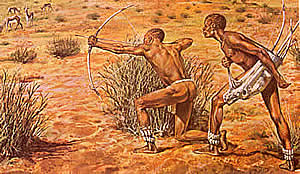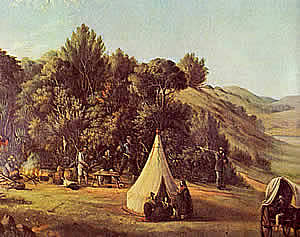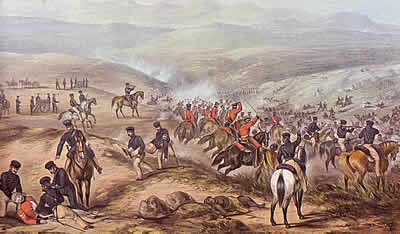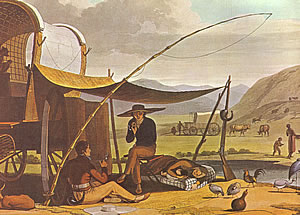HISTORY, AN
OVERVIEW OF ADELAIDE
Adelaide lies in a part of
the Eastern Cape that is rich in history due to the
confluence of South Africa's three main population groups.
The San ("Bushmen")
were the original inhabitants of South Africa and far beyond.
A hunter-gatherer way of life has meant that they have left little
in the way of artifacts.
They are best remembered for
their wonderfully natural record of wildlife in their so-called
rock art of which there is a fine legacy in the district.
With the coming of the black
Bantu speaking people from the east and the white Afrikaans speaking
people from the west, the San were displaced northwards, never to
return. never to
return.
When the British took over
the Cape from the Dutch in the early 1800's during the wars
with France, they established a military post on the southern
bank of the Koonap River (a name derived from the San "Gonappe").
This is to-day the farm Haddon, just to the south of the town.
The Dutch bequeathed to the
British two problems in the Eastern Cape. One was the
dissatisfaction of the trekboers with government from remote Cape
Town.
The other was friction between these migrant farmers
and the migrating black peoples.
In an attempt to stabilise the
frontier, the British began to introduce settlers into the region;
the well-known 1820 Settlers.
 Tension continued,
however, and during much of the remainder of the century
periodically broke out into open warfare, the Frontier Wars. Tension continued,
however, and during much of the remainder of the century
periodically broke out into open warfare, the Frontier Wars.
In 1834, a Captain Armstrong
established a larger military encampment which he named Fort
Adelaide after the wife of King William IV.
The
town subsequently grew up out of this.
In 1835 began the Great Trek
in which numbers of Afrikaans speaking inhabitants left the area to
migrate northwards in search of new lands to settle, free from
government interference.
 This thinning-out of the population
exacerbated the frontier problem and in 1836 a fort was built at
Post Retief, north east of Adelaide which could serve as a refuge
for farmers and their workers during raids. This thinning-out of the population
exacerbated the frontier problem and in 1836 a fort was built at
Post Retief, north east of Adelaide which could serve as a refuge
for farmers and their workers during raids.
Many Scottish settlers
established themselves in the area, especially in the Mankanzana
River valley. It was they who erected the first church in the
district, at Glen Thorn.
In the years since those troubled
times, Adelaide has prospered in peace and has become a prime beef,
mutton, wool and citrus farming district.
Several authors have had contact
with the town in in the form of autobiographies, diaries of frontier
life or the setting for novels; Thomas Pringle, Sir Andries
Stockenström, Pieter Retief, F.A. Venter and Iris Vaughan to
mention a handful.
The artist Thomas Baines
recorded places and events, thus creating a visual record of the
Nxuba area.
In more recent times, Adelaide
has produced its share of top South African sportsmen and women,
including several Springbok rugby players.
|
![]()
![]()